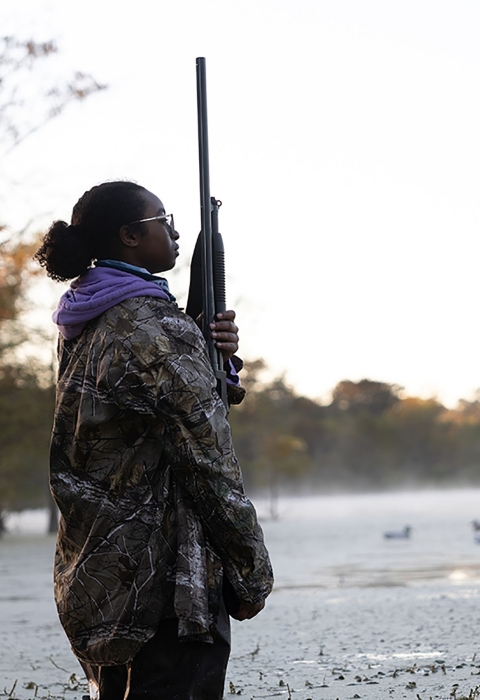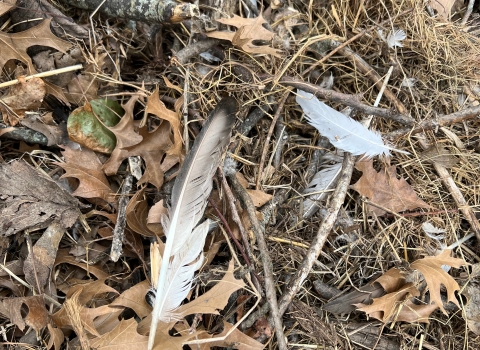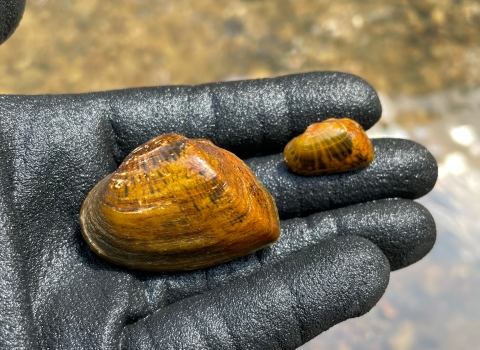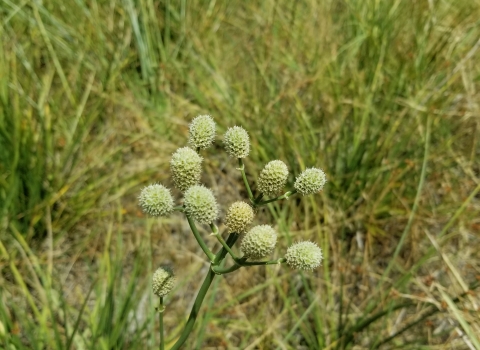WASHINGTON, D.C. – U.S. Fish and Wildlife Service Director Dan Ashe today announced the agency will expand hunting and fishing opportunities throughout the National Wildlife Refuge System, opening up new hunting programs on six refuges and expanding existing hunting and fishing programs on another 20 refuges. The rule also modifies existing refuge-specific regulations for more than 75 additional refuges and wetland management districts.
The Service manages its hunting and fishing programs on refuges to ensure sustainable wildlife populations, while offering traditional wildlife-dependent recreation on public lands.
“For more than a century, hunters and anglers have been the backbone of conservation in this country and a driving force behind the expansion of the National Wildlife Refuge System,” said Secretary of the Interior Sally Jewell. “By providing more hunting and fishing opportunities on refuges, we are supporting a great recreational heritage passed down from generation to generation, creating economic growth in local communities and helping to ensure that conservation stays strong in America.”
Under the National Wildlife Refuge System Improvement Act of 1997, the Service can permit hunting and fishing where they are compatible with the refuge’s purpose and mission. Hunting, within specified limits, is permitted on more than 335 wildlife refuges. Fishing is permitted on more than 271 wildlife refuges.
“Hunting and fishing are time-honored ways to enjoy the outdoors and teach people to value nature,” said Director Ashe. “Our National Wildlife Refuge System has millions of acres of public land and water to provide quality hunting and fishing experiences. We hope these expanded hunting and fishing programs will allow more Americans to experience this connection with nature.”
Hunting, fishing and other outdoor activities on national wildlife refuges help stimulate the economy and generate funding for wildlife conservation. Banking on Nature, a Service report released in November, showed refuges pumped $2.4 billion into the economy. Across the country, refuges returned an average $4.87 in total economic output for every $1 appropriated in Fiscal Year 2011.
Other wildlife-dependent recreation on national wildlife refuges includes wildlife photography, environmental education, wildlife observation and interpretation.
The Service’s final rule opens the following refuges to hunting for the first time:
New York
- Shawangunk Grasslands National Wildlife Refuge: Open to big game hunting.
Oregon
- Baskett Slough National Wildlife Refuge: Open to migratory bird hunting.
- Nestucca Bay National Wildlife Refuge: Open to migratory bird hunting.
- Siletz Bay National Wildlife Refuge: Open to migratory bird hunting.
Pennsylvania
- Cherry Valley National Wildlife Refuge: Open to migratory bird, upland game and big game hunting.
Wyoming
- Cokeville Meadows National Wildlife Refuge: Open to migratory bird, upland game and big game hunting.
In addition, the Service expands hunting and sport fishing on the following refuges:
California
- Colusa National Wildlife Refuge: Expand migratory bird and upland game hunting.
Florida
- Arthur R. Marshall Loxahatchee National Wildlife Refuge: Add big game hunting. The refuge is already open to migratory bird hunting.
- St. Marks National Wildlife Refuge: Expand migratory bird hunting, upland game hunting and big game hunting. The refuge is also already open to sport fishing.
Idaho
- Kootenai National Wildlife Refuge: Expand upland game hunting. The refuge is already open to migratory bird hunting, big game hunting and sport fishing.
Illinois
- Cypress Creek National Wildlife Refuge: Expand migratory bird hunting, upland game hunting and big game hunting. The refuge is also already open to sport fishing.
- Middle Mississippi River National Wildlife Refuge: Expand migratory bird hunting, upland game hunting and big game hunting. The refuge is also already open to sport fishing.
Indiana
- Patoka River National Wildlife Refuge and Management Area: Expand migratory bird hunting, upland game hunting and big game hunting. The refuge is also already open to sport fishing.
Iowa
- Neal Smith National Wildlife Refuge: Expand migratory bird hunting, upland game hunting and big game hunting.
- Northern Tallgrass Prairie National Wildlife Refuge: Expand migratory bird hunting, upland game hunting and big game hunting.
- Port Louisa National Wildlife Refuge: Expand migratory bird hunting, upland game hunting, big game hunting and sport fishing.
Maine
- Rachel Carson National Wildlife Refuge: Expand migratory bird hunting, upland game hunting and big game hunting. The refuge is also already open to sport fishing.
Missouri
- Mingo National Wildlife Refuge: Expand migratory bird hunting, upland game hunting and big game hunting. The refuge is also already open to sport fishing.
New Mexico
- San Andres National Wildlife Refuge: Expand big game hunting.
Oregon
- Bandon Marsh National Wildlife Refuge: Expand migratory bird hunting. The refuge is also already open to sport fishing.
- Julia Butler Hanson Refuge for the Columbian White-Tailed Deer, OR and WA: Expand migratory bird hunting. The refuge is already open to big game hunting and sport fishing.
- Malheur National Wildlife Refuge: Expand migratory bird hunting and sport fishing. The refuge is already open to upland game hunting and big game hunting.
Texas
- Aransas National Wildlife Refuge: Add migratory bird hunting. The refuge is already open to big game hunting and sport fishing.
- Balcones Canyonlands National Wildlife Refuge: Expand hunting for migratory birds, upland game and big game.
Vermont
- Silvio O. Conte National Fish and Wildlife Refuge: Expand migratory bird hunting, upland game hunting and big game hunting.
Washington
- Willapa National Wildlife Refuge: Expand migratory bird hunting and big game hunting. The refuge is already open to upland game hunting and sport fishing.
To view a complete list of all hunting/sport fishing opportunities on refuges, please visit the following guides: http://www.fws.gov/refuges/hunting/ and http://www.fws.gov/refuges/fishingguide/.
The National Wildlife Refuge System protects wildlife and wildlife habitat on more than 150 million acres of land and water from the Caribbean to the Pacific, Maine to Alaska. Refuges also improve human health, provide outdoor recreation and support local economies. Visit ourhome pageatwww.fws.gov/refuges. Follow us onFacebookand Twitter.



